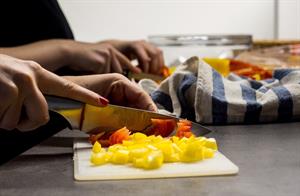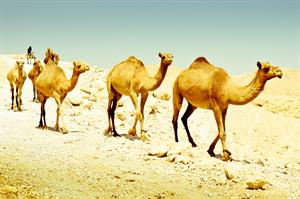
PUMPA - SMART LEARNING
எங்கள் ஆசிரியர்களுடன் 1-ஆன்-1 ஆலோசனை நேரத்தைப் பெறுங்கள். டாப்பர் ஆவதற்கு நாங்கள் பயிற்சி அளிப்போம்
Book Free DemoA small iron piece sinks in water, whereas a massive ship of heavy mass floats on seawater. Astronauts are supposed to wear a special suit while travelling in space, but we do not require a particular suit to survive on the earth surface. All these have a common reason called pressure. When pressure increases in a solid, it experiences tension and ultimately deforms or breaks based on its inherent properties. In fluids, if the pressure is increased, it causes them to flow rather than to deform. Despite the fact that liquids and gases have certain common characteristics, they also have a lot of differences.

A massive ship floats on the sea
For example, it is simple to compress a gas, whereas liquids are incompressible. Learning of all these facts helps us to understand 'pressure' in a better way. In this lesson you will study pressure in fluids, the density of fluids, and their application in practical life.
Have you ever wondered why a camel can run in a desert quickly? Why cutting tools have sharp edges? Why a truck has much wider tyres? Why does an army tank rest upon a continuous chain?
Let us find the answer to all the above questions.
In order to understand the phenomena involved in the above questions, we should know what thrust and pressure are.
Thrust:
The force that acts on an object perpendicular to the surface is called thrust. Since thrust is also a force, its unit is the same as force. The unit of thrust is \(Newton\)(\(N\)).
Pressure:
The force acting per unit area is pressure.
The unit of pressure is . In honour of scientist Blaise Pascal, the SI unit of pressure is called \(pascal\), denoted as \(Pa\).
Consider a situation,
If you tried to penetrate a blunt nail into the wood, nothing would probably happen. However, if you apply the same force to the sharp nail, the nail would penetrate the wood easily. This shows that force is not only the deciding factor for pressure; it also depends on the area. For a sharp nail, the area of contact is very small, so the entire force concentrates at a particular point that helps the nail to pierce into the wood. But in the case of a blunt nail, the area is high compared to the sharp nail, so it would not penetrate into the wood easily.
If you tried to penetrate a blunt nail into the wood, nothing would probably happen. However, if you apply the same force to the sharp nail, the nail would penetrate the wood easily. This shows that force is not only the deciding factor for pressure; it also depends on the area. For a sharp nail, the area of contact is very small, so the entire force concentrates at a particular point that helps the nail to pierce into the wood. But in the case of a blunt nail, the area is high compared to the sharp nail, so it would not penetrate into the wood easily.

Hammering a nail into the wood
Now we got an answer for all the above questions,
The sharp-edged knife cuts the vegetable easily than the blunt one because the surface area of the sharp knife is less, so it would exert high pressure.

Cutting the vegetables
Camels can walk easily in the desert because of their wide feet. Their broad feet allow the force of their body to act on a larger surface on the land, reducing the pressure exerted on the land by the camel. We can say this as we know that pressure exerted and the area are inversely proportional. Hence, the feet of the camel will not sink into the sand; thus, it can walk easily.

Camels in desert
Reference:
https://freesvg.org/hammer-with-nail
https://www.flickr.com/photos/amira_a/8008893480
https://www.maxpixel.net/Cutting-Vegetables-Cook-Woman-Hands-Fruit-Cooking-1207952
https://en.wikipedia.org/wiki/MV_St_Clare#/media/File:St_Clare-image05.jpg